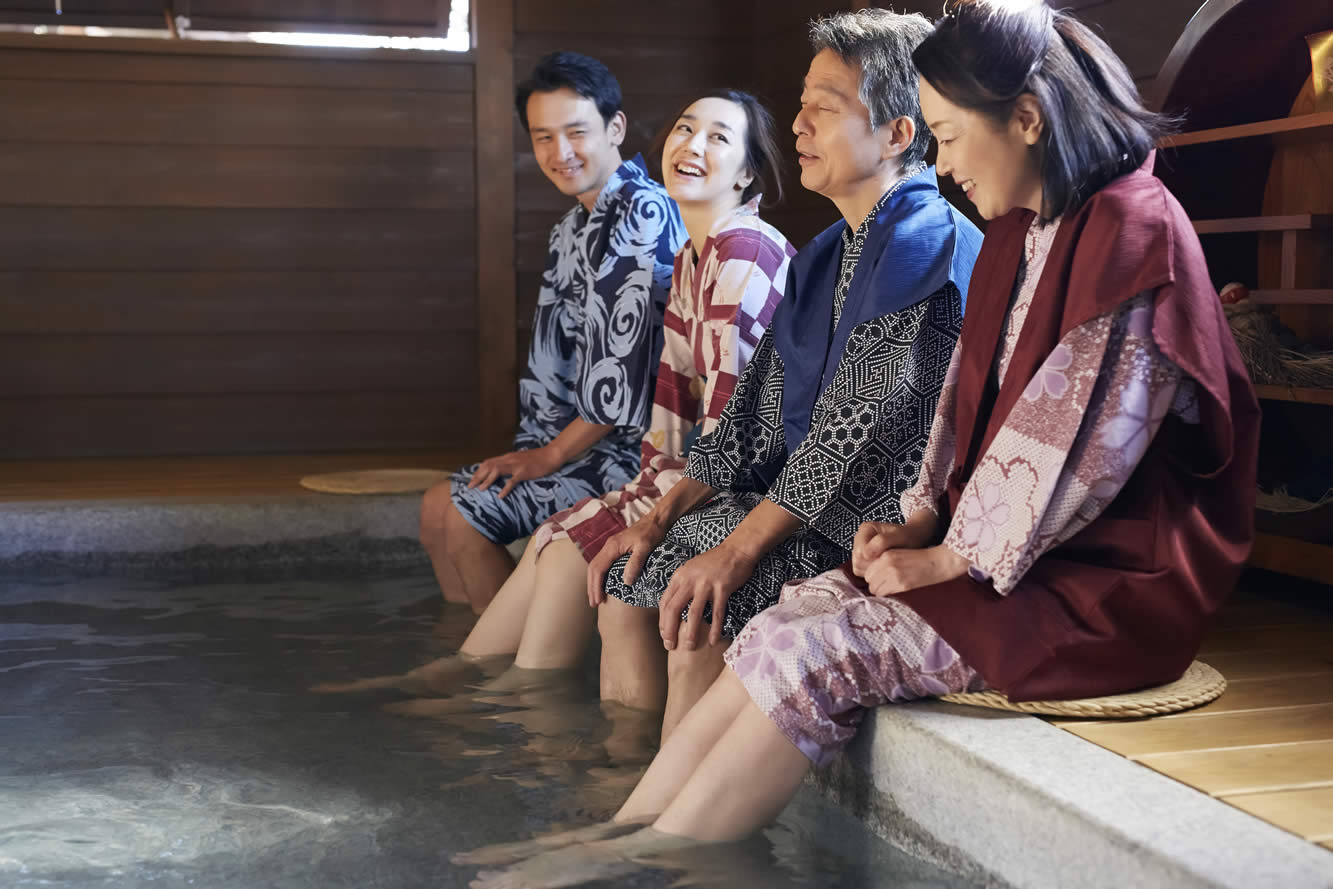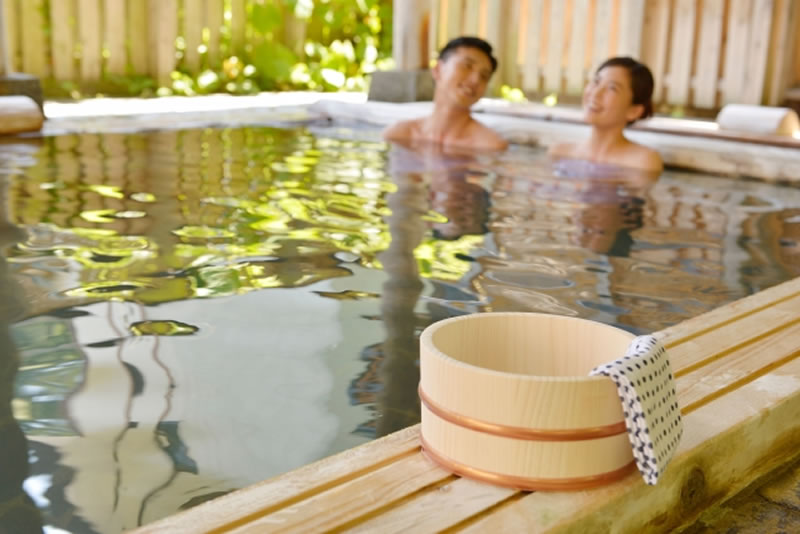If you are interested in travel in Japan then staying at a Ryokan is a must. You can spend time in the traditional lifestyle of Japan. You will sleep in the traditional Japanese way and eat elegant traditional Japanese food. But the experience can be very unique. Without some Japanese language ability you will not have the full experience. Now we will learn some Japanese words and phrases to help with your stay at a Ryokan!
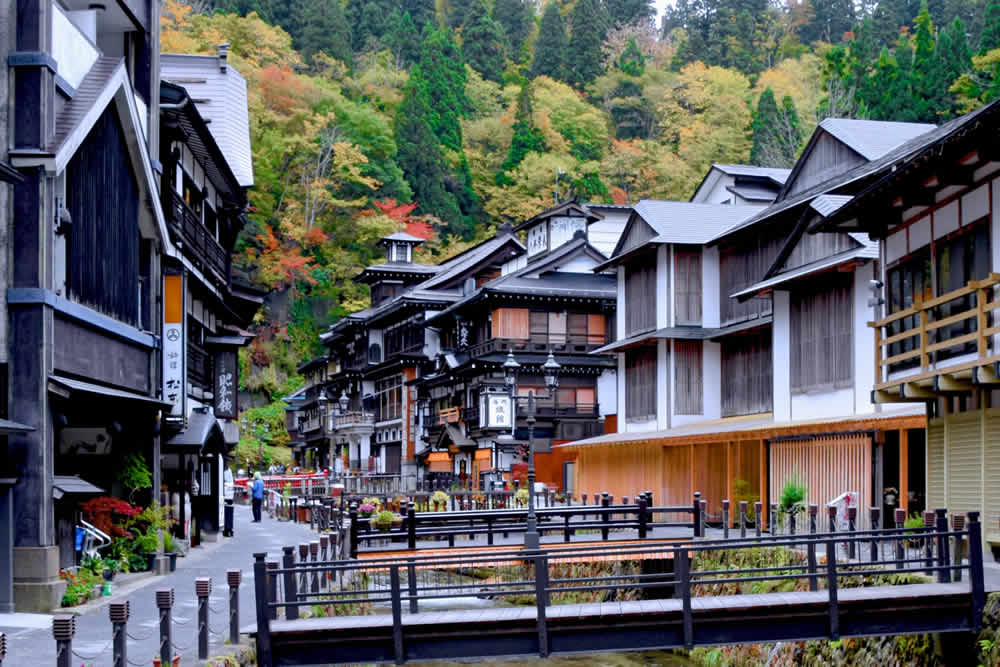
Contents
What is Ryokan?
First though, what is a Ryokan? In English it is often described as a Japanese-style inn – but a Ryokan is very unique and different from an inn you find in other countries! The whole building is furnished in a traditional Japanese style. Sometimes they are built like a hotel with many stories in a block form.
Often they are built in traditional wood houses that spread over beautiful gardens and natural views. For this reason many Ryokan are located in rural areas. Many people – friends, couples, families, like to take onsen ryoko (温泉旅行) or ‘hot spring vacation’ to these locations. Many times people will take the shinkansen (新幹線) to these locations for a relaxing weekend. Ryokans have existed since the eighth century, so staying at one of them surely is a very traditional experience.
A typical Stay at a Ryokan – how does it go?
Being Welcomed
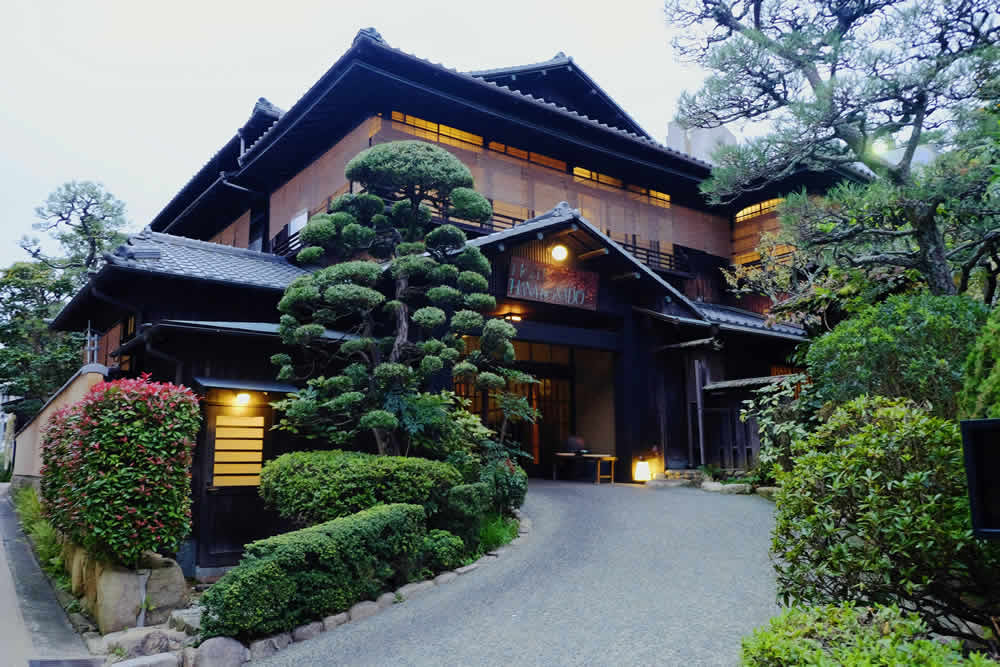
When you first enter a Ryokan, you will be greeted by women wearing kimono known as nakai-san. (仲居さん). They will bow and welcome you by saying irashaimase (いらっしゃいませ). This is a traditional greeting for service staff everywhere in Japan.
Here there is often a wide room where you will step up and take your shoes off. Sometimes there will be a row of shoeboxes or kutsubako (靴箱). Here you will store your shoes for your entire stay!
Your room at a Ryokan
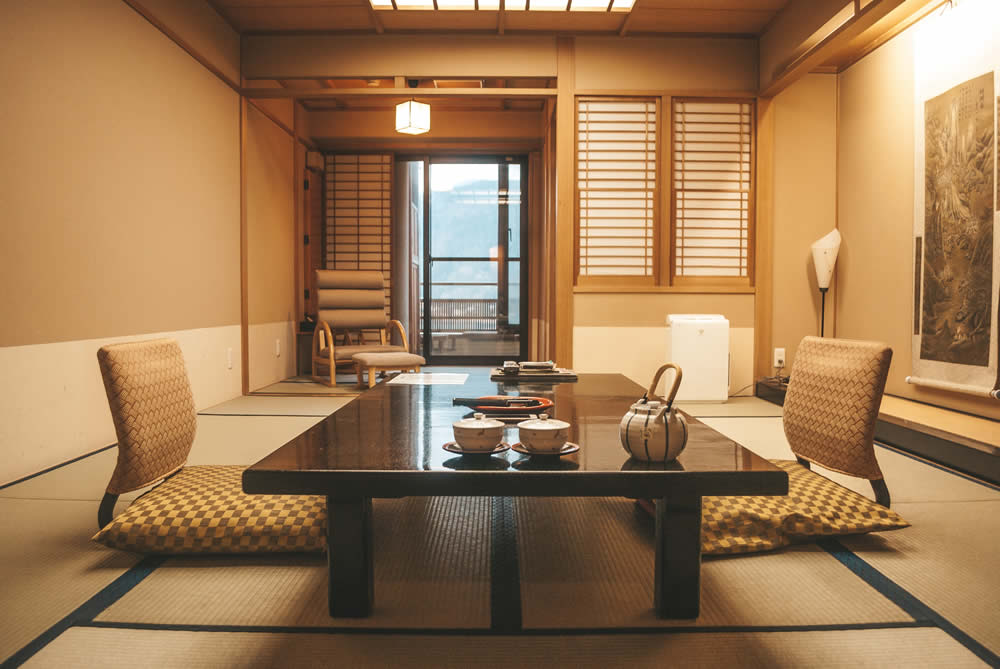
After you have registered at the reception, the nakai-san will take you to your room. At a Ryokan your room will be a washitsu (和室) or a Japanese style room. The whole floor is covered in tatami (畳). These are soft mats made of a soft straw like material called egusa (江草). There is no sofa in the room, so you will spend all your time on these mats. You can read, take a nap, watch television, and anything on the tatami.
This is also where you will sleep, and in many Ryokan also where you will eat your dinner too! Generally customers arrive at the Ryokan around 3pm or so. The nakai-san will take you to your room that will have a short table called a chabudai (ちゃぶ台) with many small cushions that you sit on around that are called zabuton (座布団).
As you put away your luggage, the nakai-san will prepare some tea for you. They may also have some local tea sweets or chagashi ( 茶菓子) to eat with you tea.
Now that you are in your room, you can change into a traditional robe or yukata (浴衣) provided for you. These are made of cotton and have nice traditional Japanese designs on them. There is a long piece of fabric or obi (帯) to hold it up. Wearing a yukata is relaxing. It puts you in the mood to enjoy the Ryokan experience.
Dinner at a Ryokan
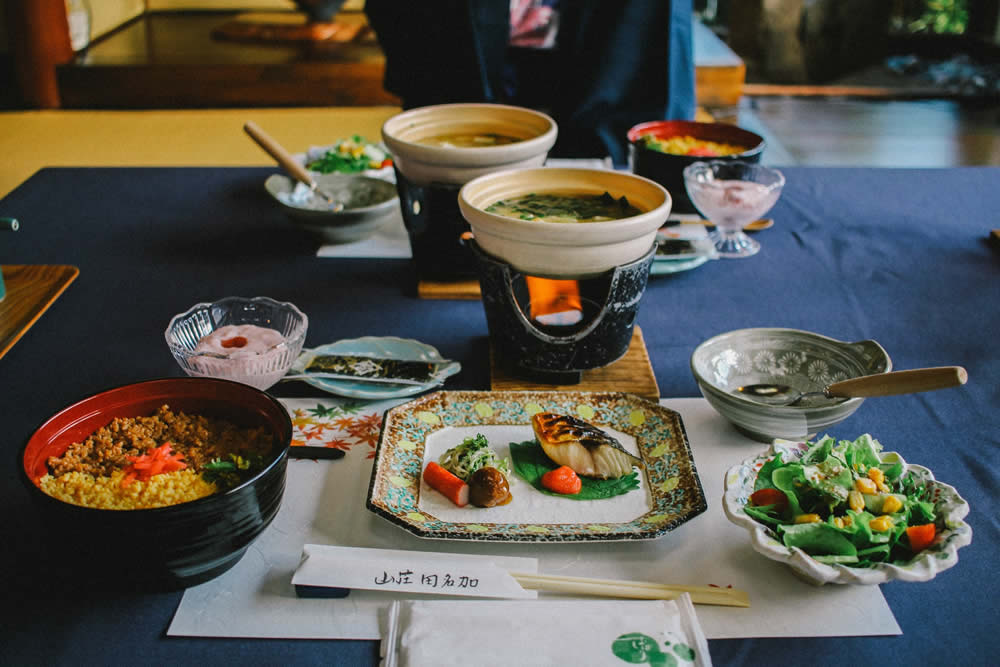
Next you will have dinner. Ryokan are famous for having very intricate and high quality meals. This is called kaiseki ryori (懐石料理), and it will have many small courses. In many Ryokan they will serve you dinner in your room. The food is very intricate, but is generally based on seafood and vegetables as well as meat and rice as well.
Some Ryokan also serve you dinner in a large hall where other guests eat too. Dinner times are usually at specific times between 6pm and 7pm. The nakai-san will ask you on arrival what time you would like to eat. You generally cannot choose times outside of the suggested times, so choose one of the times suggested.
They will also ask you what time you want to eat breakfast. That’s right, your Ryokan is going to give you a great breakfast too! This is also very high quality Japanese meal.
Bathing in an Onsen
After your dinner you will leave your room wearing your yukata to go to the large hot spring or daiyokujo (大浴場).
This is a large beautiful bath of hot water where you can relax. The hot water in the bath will have many natural minerals in it that will have health benefits. Most Onsen baths are divided between male and female sections.
First you will remove your clothes. In Japan hot spring baths are always naked. Before you go into the large bath you will first have to clean yourself. Right next to the large bath will be many rows of short showers where you must thoroughly clean yourself before entering. Japanese take this very seriously, and will often take a lot of time to clean themselves before entering the bath!
Many Ryokan have another bath near the daiyokujo that is outside. This outside bath is called a rotenburo (露天風呂). This bath will usually have beautiful garden view or a landscape view.
Bedtime – sleeping at a Ryokan
When you have finished at the bath you can go back to your room. The nakai-san will have laid out your bedding for the night in the room where you first entered.
On the tatami, they will put your futon (布団). This is a thin mattress that you sleep on with a blanket and small pillow above it. Although the futon is thin, it is very soft when combined with the cushion from the tatami. With a good meal in your stomach and a relaxing hot spring bath you will sleep very well.
The next morning you can use the hot spring bath again if you like, and the nakai-san will serve you breakfast. After breakfast you will check out and be on your way. As you can see, this is a very relaxing way to spend a weekend. Ryokan are very popular in Japan for this reason. The next time you’re in Japan be sure to visit one!
